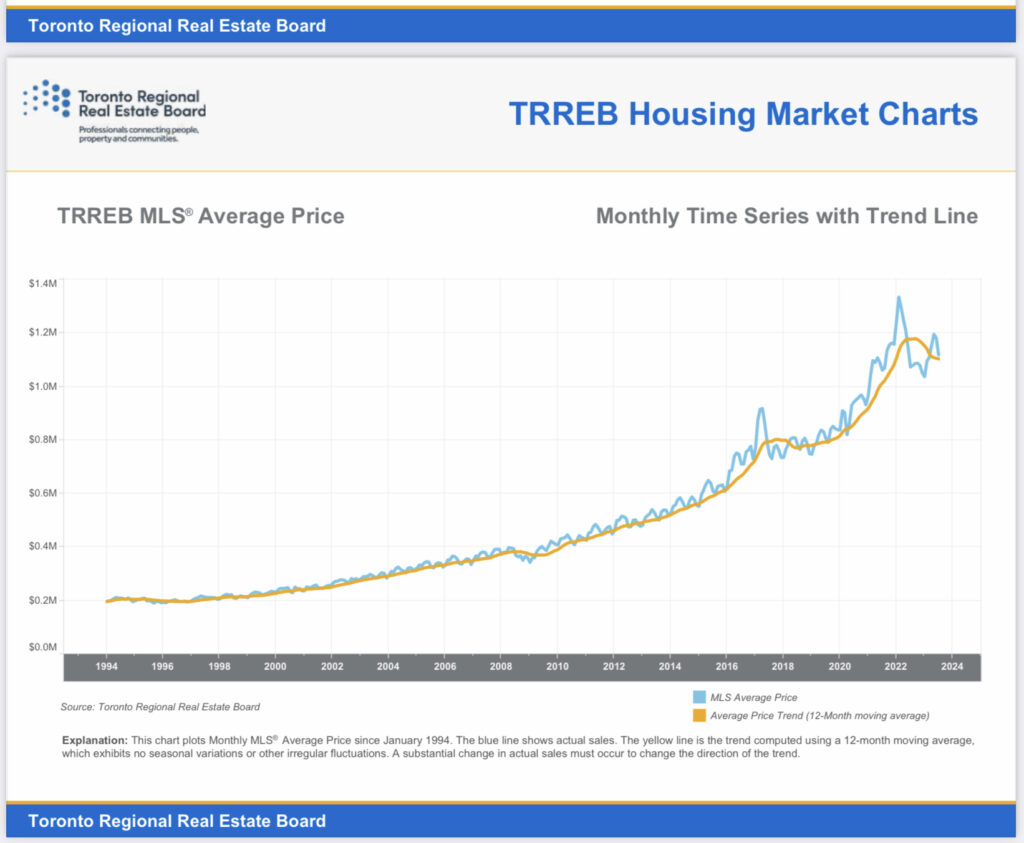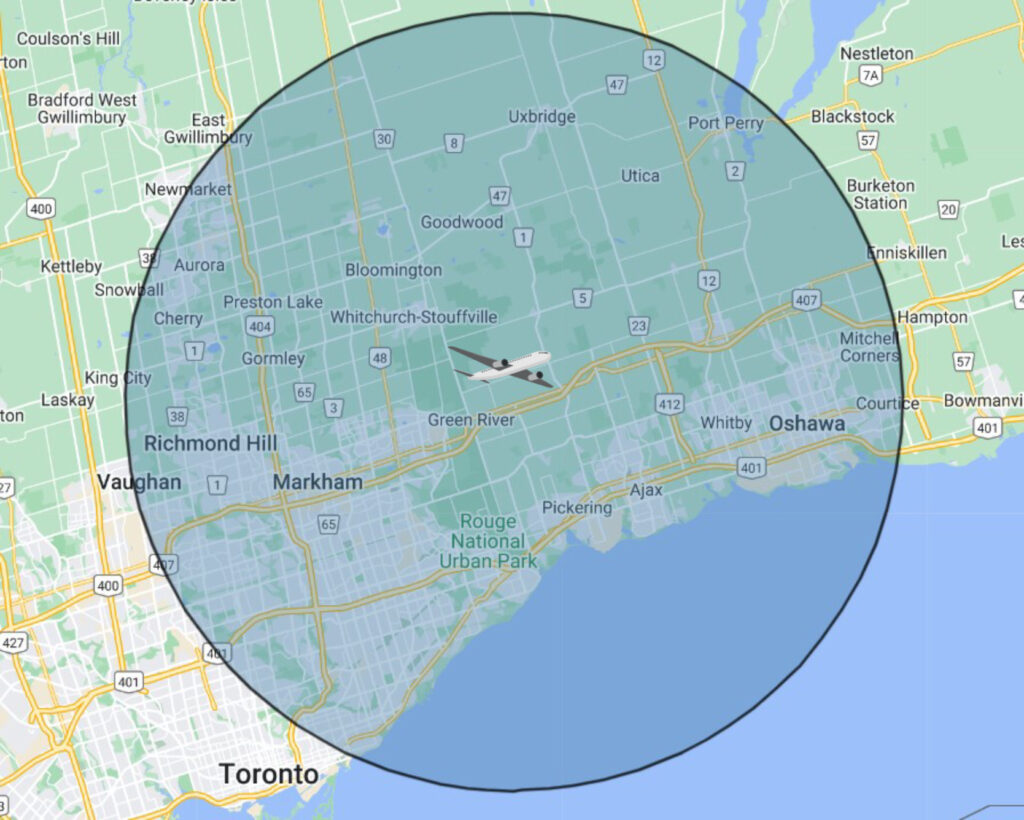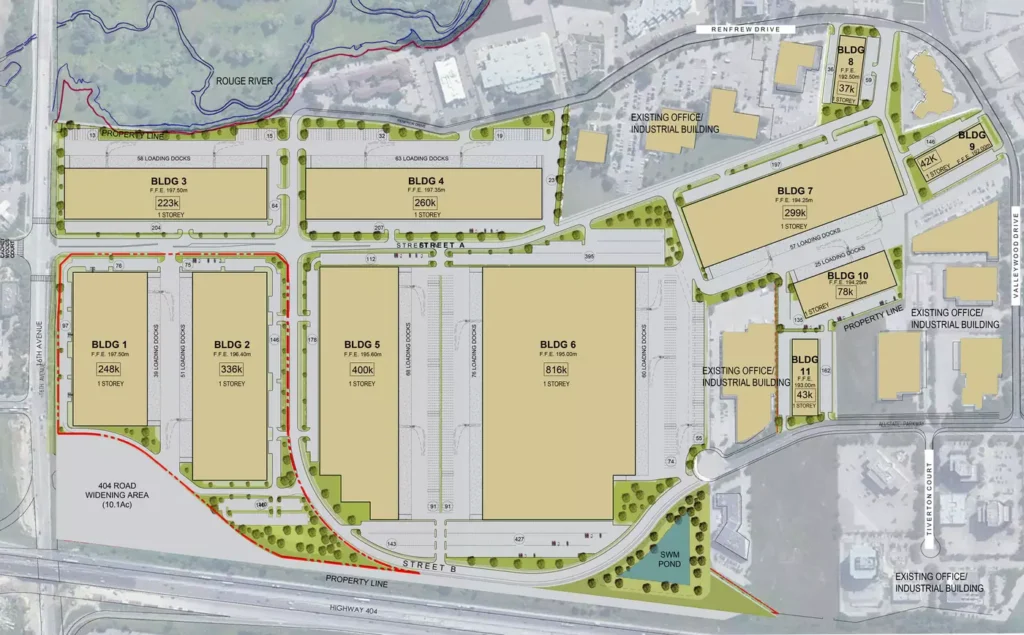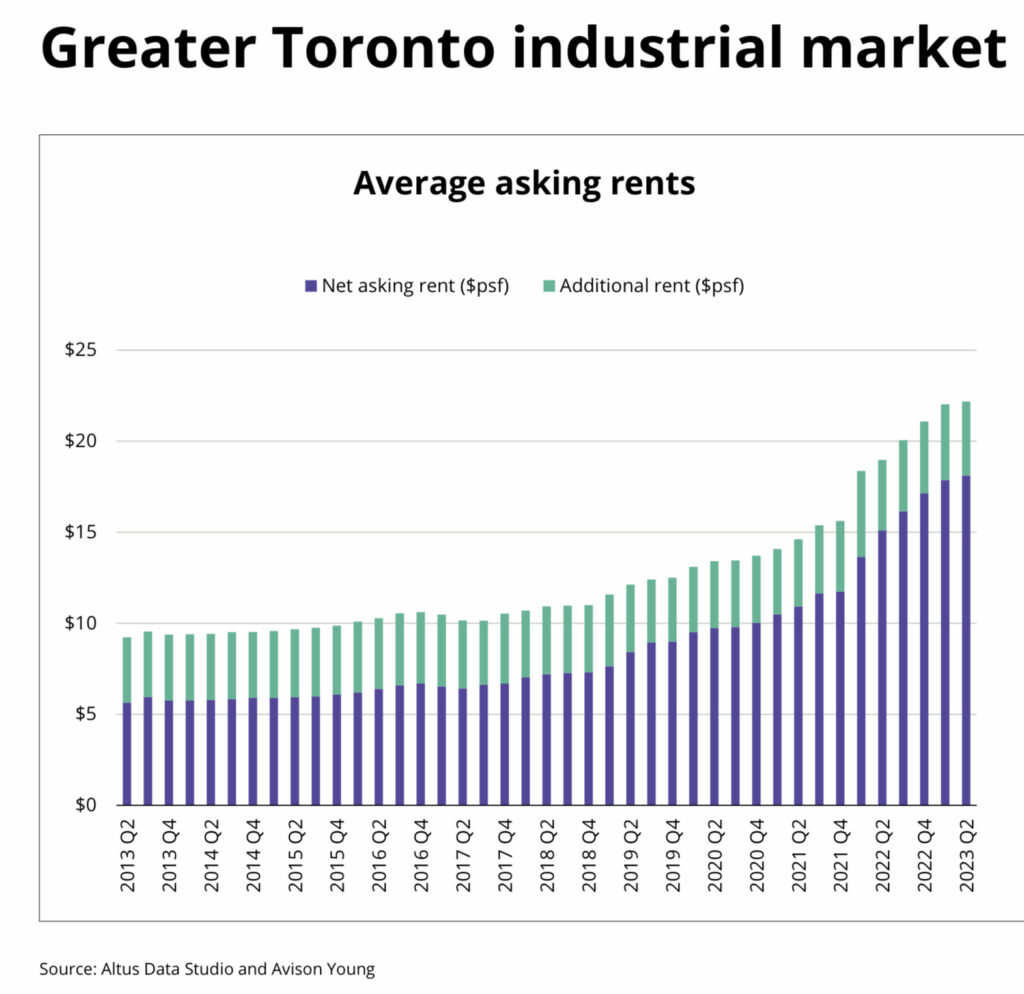It is hard to find the words to describe the misery of Canada’s housing crisis in the Greater Toronto Area (GTA). For a decade demand has outstripped supply causing prices to soar. For most, buying a home is now an unattainable dream. Many are struggling to make enough to afford rent. Manufacturing and service businesses are also struggling with soaring land costs, if any land can be found at all. Even trying to fly into the GTA is a challenge thanks to Toronto Pearsons distinction as the least reliable major airport in North America. All the result of Southern Ontario’s role as North Americas fastest growing region. But there is hope, something that the federal government can do right now to relieve the pressure.
Relief for all three of these building crises can be provided by a single federal government action. An action that acknowledges the important link between residential land use, industrial land use, road and aviation infrastructure. An action as easy to do as a stroke of the pen. An action that will enable growth into a well-prepared new direction. An action that the local municipalities and the Region of Durham have been begging the federal transportation minister to take for years. An action that will improve transportation efficiency, reduce commute times, add $10 billion to Canada’s Gross Domestic Product, and generate half a billion dollars a year in new tax revenue.

Solution: Build Pickering Airport and its associated business park.
All the federal Minister of Transport has to do is to stop being a wall flower and start dancing with the investors eyeing 9600 acres of federal government owned land in Pickering. Land already zoned and planned for development including a new airport. An airport that will become an economic engine enabling a new 30 million sq ft industrial park. A project that will create 60,000 high paying new jobs and reduce residential property taxes across the region.
Developing the Pickering Airport lands will relieve the pressure on the industrial land shortage in the GTA. It will reduce the pressure on other industrial land in Mississauga, Toronto and Markham enabling rezoning into high density housing. This will enable the construction of new homes closer to jobs for the 100,000 new citizens arriving in the GTA every year. It will provide the new utility and passenger aviation capacity the region desperately needs to reliably connect to the global free market economy.

Figure 2: The new Pickering airport will become an economic engine for the 2.5 million people that live with-in the 30 km AEZ (Airport Economic Zone).
So, What the Hell is the Hold up?
Everyone has a favorite theory reflecting their own diverse range of agendas. Some claim that influence peddling by those profiteering from soaring land prices is to blame. The recent greenbelt land swap scandal has generated numerous conspiracy theories. Why develop the greenbelt when thousands of acres of federal land zoned for development sit idle? How about a local Liberal Government MP, Jennifer O’Connell, with ties to a lucky few now “temporarily” renting the airport lands on the cheap? By coincidence she received campaign donations from the developers at the heart of the greenbelt swap.
Five corporations currently rent the majority of land for only $120 an acre a year. The MP’s actions in aggressively blocking development by promoting the extension of cheap land leases to an annotated few is out of synch with the fast-growing region. They do not reflect the needs and wishes of the 2.5 million people who now live within 30 kilometers of the new airport. Are the MPs actions in support of a more hidden network of patrons?
Some write if off to a plague of NIMBY (Not In My Back Yard) bullies manipulating elected officials into stalling development by spreading misinformation. One group called Land Over Landings, wants millions in subsidies to redirect airport land worth billions to farming. Despite almost half of Southern Ontario being Class 1 farmland, and output from Ontario’s privately owned farms increasing yearly, they argue for the heavy hand of government intervention. Did someone in distant Ottawa take this group with a dozen members, that puffs themselves up by referring to twitter followers as supporters, seriously?
Or is the delay caused by a perceived need to simplify political “green messaging”? An ideological “no growth” solution to curbing carbon emissions instead of the more difficult to understand new net zero emissions aviation fuel? One thing is clear, without the new local economic hub created by the airport, emissions causing congestion and commute times will increase across the GTA.
Are Federal Cabinet Silos to blame for the delay?
Perhaps no one in the federal cabinet has yet connected the dots between housing, economic development and net zero aviation transportation in Southern Ontario? Each is under a separate department run by a different cabinet minister. Is the current federal government’s siloed cabinet structure between housing, transportation and economic development the root cause?
As of August 2023, the three ministers are:
- Sean Fraser, Minister of Housing, Infrastructure and Communities
- Pablo Rodriguez, Minister of Transport
- Filomena Tassi, Minister responsible for the Federal Economic Development Agency for Southern Ontario
Can Pablo Rodriguez, the newly appointed Minister of Transport who holds the Pickering airport file, connect the dots that others may have missed? A good start would be for all three ministers to listen to the local Durham regional government. The region clearly understands the importance of building the new airport as soon as possible. A recent 20-6 vote in favor of an updated Regional Official Plan that includes Pickering airport shows strong local support. With the publicly owned land now worth up to a one million dollars an acre and demand soaring, the project is a sure success.

Lessons from Buttonville Airports Redevelopment
A good example of the relationship between the GTAs housing shortage, industrial land squeeze and aviation capacity crisis is the redevelopment of nearby Buttonville airport. The 169-acre site has been a profitable privately run GA (General Aviation) airport for decades. It was once Canadas 11th busiest airport.
In order to re-direct smaller aircraft traffic to Buttonville, first the province, then the GTAA (Greater Toronto Airports Authority) and York region provided hundreds of thousands of dollars a year. The subsidy was an incentive for it to remain open until Pickering airport was developed. This increased Pearson airports capacity for handling larger passenger jets by shifting smaller aircraft to Buttonville. Then in 2009 this incentive payment was cancelled in favor of a strategy of discouraging traffic by increasing landing fees at Pearson Airport. If you land at Toronto Pearson International Airport in a small aircraft today, it will cost you 20 times what it did in 2009. $1300 dollars including ramp fees and taxes. The highest in North America.
While Buttonville was still profitable as an airport, without the incentive it was more profitable to redevelop the land. In 2011 Buttonville’s owners did what anyone would do in their place in a free market economy. They entered into a partnership with one of Canada’s largest developers, Cadillac Fairview, to redevelop the land. What followed was years of failed attempts to strike a deal with the city of Markham and the region of York to rezone the land for higher density development. This included 7000 apartments. Finally, Cadillac bought the rest of the land and took an easy out.
Instead of building new desperately needed housing, Cadillac is developing the land in a way that does not require rezoning. It will cannibalize the airport to build a new 2.7 million sq ft industrial park. The reason is free market economics and the soaring demand for industrial land created by urban densification.
Across the GTA, industrial vacancy rates have been below 2% for the last five years. Industrial land values across the GTA have soared and rents have increased by as much as 36% in just the last two years. According to the Toronto Board of Trade, available uncommitted, serviced industrial land within the 30 km radius of the Pearsons Economic Zone (PEZ) is at an all-time low of less than half a percent. According to Avison Young’s second quarter 2023 Greater Toronto Industrial Market Report, the Easter GTA (Durham region) vacancy rate is only 0.6%. Norther GTA (including Buttonville) has a vacancy rate of 1.3%.

The GTAs big squeeze is causing soaring costs and falling productivity.
In 2022 Statistics Canada reported that the country’s population grew by over a million people for the first time in history. 500,000 of those moved to southern Ontario boosting economic growth. But at the same time, Canada is one of the few advanced economies that has failed to recover to its pre-pandemic standard of living, measured by real gross domestic product per capita.
The Organization for Economic Cooperation and Development predicts that Canada will place last among OECD members in real GDP per capita growth for decades to come. Declines in productivity caused by high land costs, lack of reliable air transportation, higher costs of access to global markets and housing costs will all play a role in this failure.
A young person entering the workforce today can look forward to stagnating average real incomes that could last all of their working lives. Canadians’ standard of living, and our current high quality of life, are predicted to decline year over year relative to other peer nations.
We need federal government leadership.
Aviation businesses now based at Buttonville airport have until November 30th to find another location. Businesses, in a small airport that created $100 million in GDP and that over the years have trained 10,000 commercial pilots, have few places to go. These jobs and economic activity are being displaced for even more critical supply chain and light manufacturing space. Why can’t we have both? Why are we forced to destroy one part of our economy to enable another?
I Teach part time at Canadian Flyers flight college at Buttonville airport. The college has so far been unable to find a new home. The completion of the education of hundreds of students is at risk. Oshawa is the only airport within an hour’s drive and is doing its best to make room for businesses from Buttonville. Unfortunately, Oshawa airport has no room for another flight college and has even been directed by city council to evict one of two existing flight colleges at the airport to reduce noise. This despite a national pilot shortage that is expected to last decades and hurt Canada’s economic growth.
Oshawa airport has few choices as it is a small airport surrounded by homes with no room for expansion. Only a few high-end business jets from Buttonville, those able to stomach the sky-high costs and operational restrictions, are trying to get back into Pearson.
Will the new Minister of Transport Save the day?
The Billion-dollar question is, will the just appointed new minister of transport see the opportunity his predecessors missed? When will our federal leadership realize that they are key to solving these critical local issues? Why are they not listening to Durham regions pleas to build Pickering airport?
A single simple action by the federal government can ease the housing crisis, improve industrial productivity and improve aviation reliability all at once. Let Private investors develop a new airport and industrial park on land already set aside and zoned for this project.
But what was the previous Minister of Transport doing? Well of course, another airport study!
Hundreds of thousands of dollars of taxpayer money and more years of avoiding the issues.
I and others that live within the 30-kilometer economic zone around the new Pickering airport await the epiphany moment.
Related posts:
Development plan with new Airport Wins vote 20 to 6 at Durham Region – Friends of Pickering Airport
What is Pickering Airport’s Employment Zone? – Friends of Pickering Airport
Final Pickering Airport Capacity Study Airborne Again! – Friends of Pickering Airport
New Pickering Airport to cut your property taxes in half – Friends of Pickering Airport
Land Over Landings Billion dollar ask of the Canadian tax payer. – Friends of Pickering Airport
Who is funding Anti-Airport Politics in Pickering? – Friends of Pickering Airport
References:
Prime Minister announces changes to the Ministry | Prime Minister of Canada (pm.gc.ca)
pez-infographic-2.pdf (windows.net)
PowerPoint Presentation (avisonyoung.ca)
York-Buttonville deal possible (yorkregion.com)
Global passenger traffic could double,20-Year Air Passenger Forecast